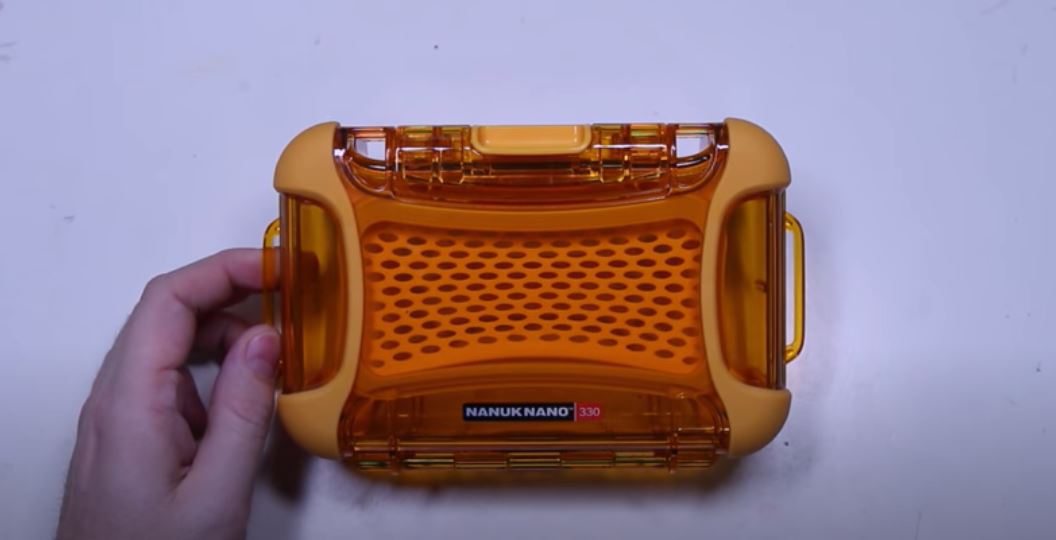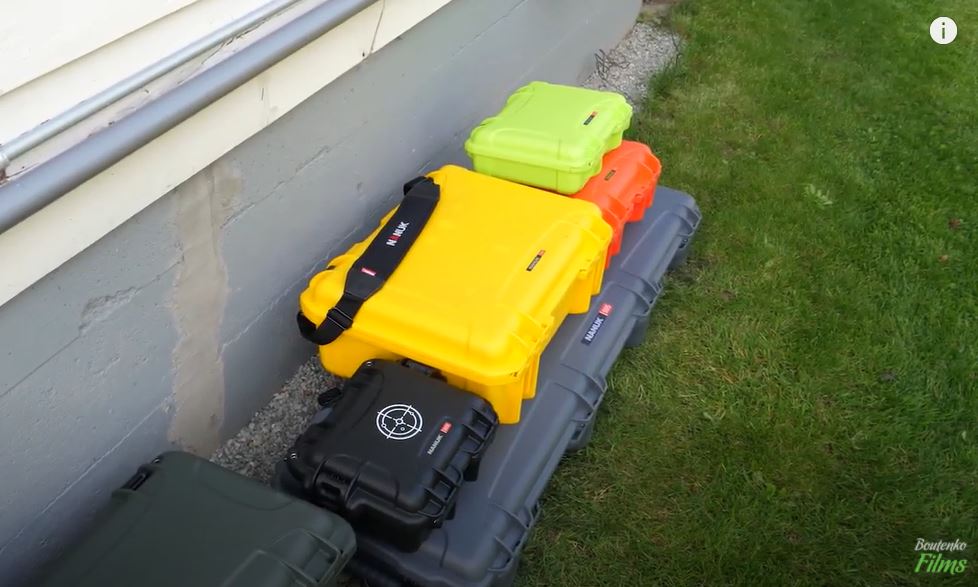Hard Case Adventure Photography Community Tips: Stay Safe and Stay Ready in Any Weather
 The action and adventure photography community is unique in that it is almost entirely self-perpetuating; the pictures are snapped by and for participants. Aside from the occasional armchair observer writing online content in awe of their daring, extreme sports enthusiasts are almost exclusively responsible for producing action and adventure photography content. Outside of combat photography, it is one of the only fields where the people behind the camera are just as comfortable on the front lines. To gain an appreciation for how rare this truly is, try to think of a few boxing reporters who have climbed into the "squared circle," or an NFL reporter who occasionally runs blitzes with the Ravens' linebackers.
The action and adventure photography community is unique in that it is almost entirely self-perpetuating; the pictures are snapped by and for participants. Aside from the occasional armchair observer writing online content in awe of their daring, extreme sports enthusiasts are almost exclusively responsible for producing action and adventure photography content. Outside of combat photography, it is one of the only fields where the people behind the camera are just as comfortable on the front lines. To gain an appreciation for how rare this truly is, try to think of a few boxing reporters who have climbed into the "squared circle," or an NFL reporter who occasionally runs blitzes with the Ravens' linebackers.
Being a front-line participant has a number of benefits for the quality of your pictures. This proximity gives you the opportunity to focus on details that outside observers would not be able to appreciate, and gets you directly involved with the narrative and emotions that your pictures are trying to capture.
A large part of action and adventure photography is to do with story-telling, after all. You need steely nerves, a steady hand, and a keen eye for opportunity to capture the drama as it unfolds. If you possess these traits, your reward will be strip of powerful shots to add to your portfolio.
Fortunately, these traits are not all talent-based; they can be learned with the proper guidance. When you are out on your action photography adventure, you will inevitably come across situations that call for special skills, equipment, and shooting strategies. Read on to learn some action and adventure-shooting insights from the pros so that you can take your shutter story-telling skills to the next level.
Hiking, Biking, Backpacking, and Adventure Motorbiking – Tips for Packing and Preparedness
When packing up your camera for any foot-slogging adventures, your carrying weight and bulk should be one of your main concerns. Though choosing between your favourite kits is always tough, you should be cut-throat when deciding what comes along. Try to anticipate what you will be shooting out there, visualizing the vistas and natural features that are most important for you on this journey, and pack accordingly.
Additionally, you should always try to keep your camera at the ready when hiking during the early morning or late evening. Fog, long shadows, sparkling dew, and other interesting lighting is common at these times. Though it is a look reserved for the most stereotypical of tourists, hanging your camera around your neck can be the way to go on your hiking excursion. You never know when a photogenic creature will stumble across your path, and this carrying position keeps you at the ready.
If you happen to venture into the desert, you will need to be prepared to protect your equipment from the elements. Sand will be your worst enemy if you underestimate its pervasive tendencies. Windblown sand gets everywhere, and can wreak havoc on your camera's lenses and internal components. We advise packing lenses and cameras individually in sealed nylon Ziploc bags, and to avoid changing lenses or opening up your camera when the wind is blowing. Hard Case manufacturers are all too familiar with the damage that sand grit can cause; indeed, our Hard Case product line was developed with sand protection in mind.
When biking, try to keep your camera stored atop your hydration pack so that you always have quick access. Strap it in to your shoulder strap for easy access, and keep it in your pannier when riding from spot to spot. Compact point-and-shoot cameras are usually well-suited to biking trips where shots can creep up on you all of the sudden.
Motorbike enthusiasts who are carrying camera equipment would be well-advised to invest in some extra protection. When these guys fall, they fall hard, and they need cases that can protect their tools of the trade. Nanuk Hard Cases are not only cheaper than the OEM cases commonly seen on bikes, but are incredibly durable as well. We have seen Hard Case owners take some serious spills, and walk away with only some superficial scratches to show for it.
Skiing, Snowboarding, and Arctic Adventures – Tips for Speed and Safety
Your adventures may take you to the opposite end of the weather spectrum, too. You need to be equally prepared for Sub-Saharan desert and sub-zero temperatures.
When shooting skiing or snowboard, you will probably ride ahead of the subject to have a frontal shot, or to set up at your shooting location. This makes speed crucial for ski and snowboarding action photography, as a missed shot translates to a long lift ride back into position. Keeping your camera tucked in your pack or Hard Case does not give you the kind of rapid access you need. We recommend using a hip pack with a waist belt and shoulder strap. Your hip pack should be rugged enough to keep out the snow, and many are made to integrate with day packs.
Though speed is essential in ski and snowboard photography, safety is always paramount. Do not wear your camera dangling from your neck, as it could catch a tree branch in passing and cause serious injury. Additionally, do not tuck your camera up under your jacket when riding, as a fall could injure you and ruin your camera.


